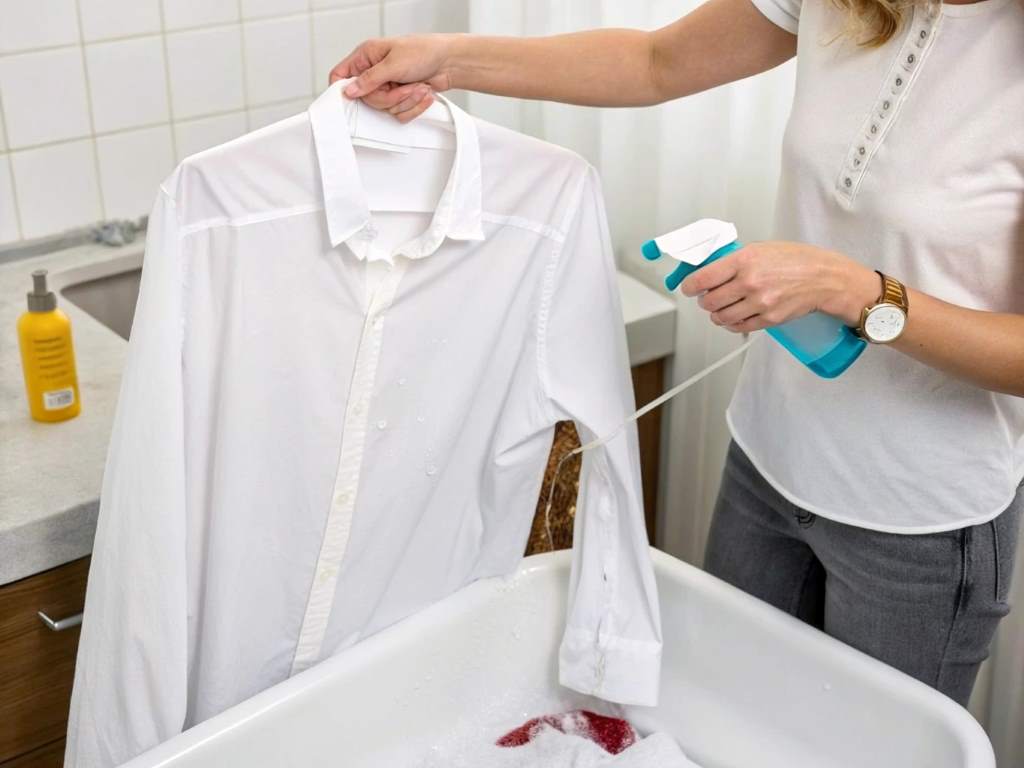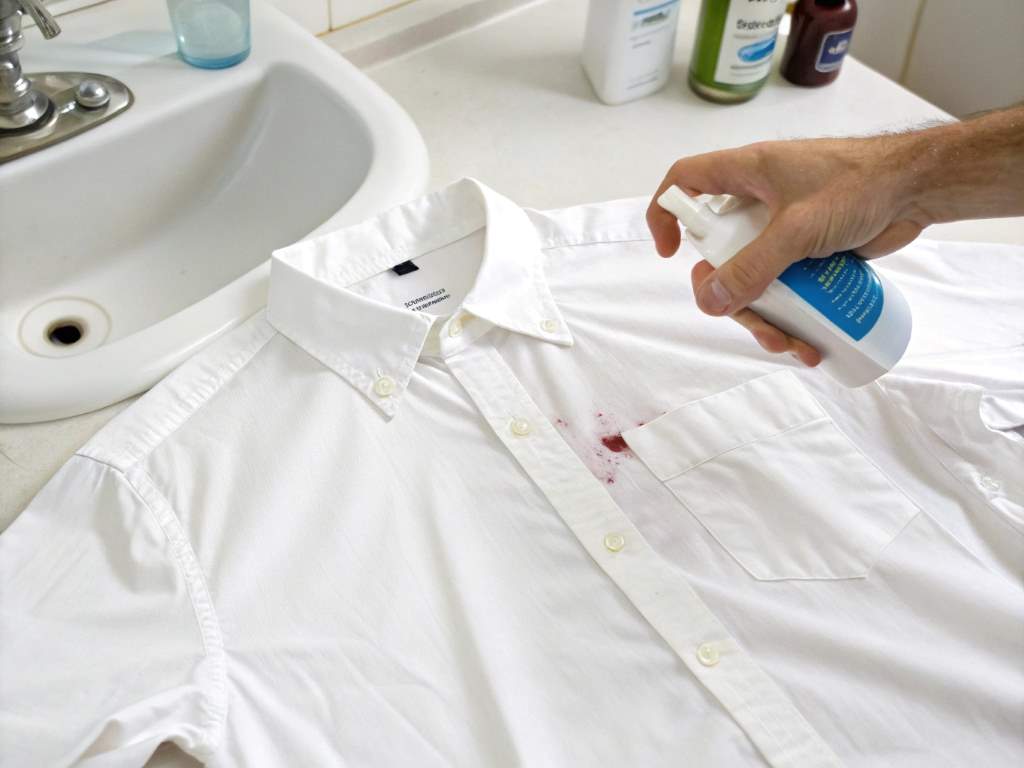How to Remove Stains from a White Shirt: Proven Methods for a Spotless Look

White shirts are timeless. They’re crisp, classy, and suitable for any setting—from boardrooms to brunch. But there’s one downside: stains. Whether it’s morning coffee, underarm sweat, or a surprise splash of pasta sauce, white shirts seem to attract them all.
And let’s be honest—we’ve all been there. You’re getting ready for a big meeting, only to discover a faint yellow stain around the collar or an old deodorant mark that refuses to leave. It’s frustrating.
Keeping your white shirts looking fresh isn’t impossible. With the right techniques and a few pantry items, you can lift most stains without damaging the fabric.
We’ll dive into practical, science-backed methods that actually work. And because we believe in giving back, here’s something meaningful—explore Bra Day USA and their important cause. It’s more than stain removal; it’s about feeling good in what you wear, inside and out.
Let’s get into the action.
Understand the Type of Stain Before You Treat It
Not all stains are created equal. Each stain has its own behavior and requires a specific approach.
Types of common stains on white shirts:
- Oil-based stains (makeup, salad dressing)
- Protein stains (sweat, blood)
- Tannin stains (coffee, tea, wine)
- Dye stains (ink, ketchup, fruit juice)
Why This Matters
According to the American Cleaning Institute, nearly 72% of consumers say they use the wrong cleaning agent for specific stains. That can make the stain worse or set it permanently.

How to Identify a Stain Type:
- Tannin stains are usually brown or red. They dry fast and seep into fibers.
- Protein stains like sweat or blood tend to have a yellowish or rusty look.
- Oil-based stains often leave a darkened patch and feel greasy.
- Dye stains usually appear as brightly colored splotches.
Understanding this is the first step to successful white shirt stain removal. Also, remember to discover best bra for women at https://bradayusa.com/how-to-choose-the-perfect-bra-for-breast/. Wearing the right base layers helps reduce sweat accumulation—one of the top causes of shirt stains.
Step-by-Step Guide to Removing Sweat and Deodorant Stains
Sweat stains are one of the most common—and most stubborn—white shirt enemies. These yellow patches, especially around the armpits or collar, are due to a mix of sweat and antiperspirant ingredients.
What You’ll Need:
- Baking soda
- Hydrogen peroxide
- Dish soap
- An old toothbrush
Method:
- Mix 1 tablespoon of dish soap, 2 tablespoons of hydrogen peroxide, and 1 tablespoon of baking soda.
- Apply the mixture directly to the stained area.
- Use the toothbrush to gently scrub the solution into the fabric.
- Let it sit for 30 minutes.
- Rinse with cold water, then launder as usual.
Why It Works:
Hydrogen peroxide acts as a natural bleach, baking soda lifts odors, and dish soap cuts through oils. A study published by the University of Illinois found that hydrogen peroxide is highly effective for organic stains like sweat when used in low concentrations.
I’ve personally used this method after a summer hike where my white cotton tee was practically ruined by sweat stains. This combo brought it back to life—almost like new. Explore How to Clean Leather Coach Purse?
How to Tackle Food and Drink Stains (Red Wine, Coffee, Ketchup)
Spills happen. You’re enjoying a glass of red wine or sipping hot coffee, and suddenly—disaster. A blotch on your white shirt.
But don’t panic. Fast action is key.
Red Wine
- Blot (don’t rub!) with a paper towel to absorb as much liquid as possible.
- Sprinkle salt or baking soda on the stain to absorb the wine.
- After 10 minutes, rinse with cold water.
- Apply white vinegar followed by dish soap.
- Wash as normal.
Coffee and Tea
- Immediately rinse the stain with cold water.
- Apply a mix of 1 part vinegar and 2 parts water.
- Let sit for 10–15 minutes.
- Blot and rinse before washing.
Ketchup
- Scrape off excess gently with a spoon or knife.
- Run cold water through the back of the stain.
- Apply liquid laundry detergent directly to the area.
- Let sit for 5–10 minutes before washing.
These quick responses prevent the pigments from setting into the fabric, keeping your whites looking clean.
Removing Ink and Dye Stains Without Damaging Fabric
Ink stains on a white shirt feel like a fashion death sentence. But don’t worry—these can be handled with the right tricks.
What You’ll Need:
- Rubbing alcohol (or hand sanitizer)
- Cotton balls or swabs
- Paper towels
How to Remove:
- Place a paper towel under the stained area.
- Dip a cotton ball in rubbing alcohol.
- Dab gently onto the stain. Ink will begin to lift onto the paper towel.
- Keep rotating cotton balls as they absorb the ink.
- Rinse thoroughly and wash.
Pro Tip: Avoid heat (no hot water or dryers) until the stain is fully gone. Heat will set dye stains.
Research from Clorox shows that alcohol-based cleaners are up to 85% effective on ballpoint pen stains when applied immediately.
Ink stains from a pen burst in my shirt pocket during a meeting once. Rubbing alcohol saved that shirt—and my presentation.
Preventing White Shirt Stains Before They Start
Prevention is your best defense. Here’s how you can protect your white shirts before they face a stain battle.
Easy Prevention Tips:
- Wear undershirts to absorb sweat.
- Use aluminum-free deodorant to avoid yellowing.
- Treat collars with baby powder or cornstarch before wear.
- Be cautious with food—use napkins as shields during meals.
- Wash whites frequently to prevent buildup.
Over time, even invisible body oils and product residues create a dull yellowish tint. According to Consumer Reports, frequent washing of white garments in cold water reduces long-term discoloration by 40%.
Best Commercial Stain Removers for White Shirts
While homemade treatments are great, sometimes you need a heavy-duty product.
Top Picks:
- OxiClean White Revive
- Oxygen-based bleach.
- Safe on most whites.
- Works well on tough set-in stains.
- Shout Advanced Gel
- Strong pre-treatment gel.
- Targets oil, makeup, and food.
- The Laundress Stain Solution
- Plant-based formula.
- Good for delicate fabrics.
Tips for Use:
- Always check the care label first.
- Test on an inside seam to avoid fabric damage.
- Don’t mix stain removers with chlorine bleach unless labeled safe.
A Consumer Reports comparison found that pre-soaking whites in OxiClean for 6 hours improved stain removal effectiveness by over 60% compared to regular detergent.
These can be life-savers for shirts with multiple or old stains.
Conclusion
Keeping your white shirts clean doesn’t require a miracle—just the right information and a little effort. Whether it’s a coffee spill, sweat marks, or ink blots, there’s always a method to restore your shirt’s brilliance.
With consistent care and a few DIY treatments, you’ll no longer fear spaghetti nights or summertime strolls. Plus, knowing what causes stains gives you the upper hand in avoiding them altogether.
If you found these tips helpful, share them with friends or leave a comment below—we’d love to hear your favorite stain-removal trick!
FAQs
How do I get yellow armpit stains out of a white shirt?
Use a mixture of baking soda, hydrogen peroxide, and dish soap. Let it sit for 30 minutes, then wash.
Can I use bleach on white shirts?
Yes, but use it cautiously. Bleach can weaken fabric fibers and cause yellowing over time. Use sparingly.
What’s the best stain remover for delicate white fabrics?
Try The Laundress Stain Solution. It’s gentle and works well on silk, lace, and other delicate materials.
How do I stop my white shirts from turning gray?
Avoid washing them with colored clothes. Use cold water and a detergent meant for whites.
Are commercial stain removers better than home remedies?
Both work well. Home remedies are good for fresh stains. Commercial options help with older, set-in stains.








